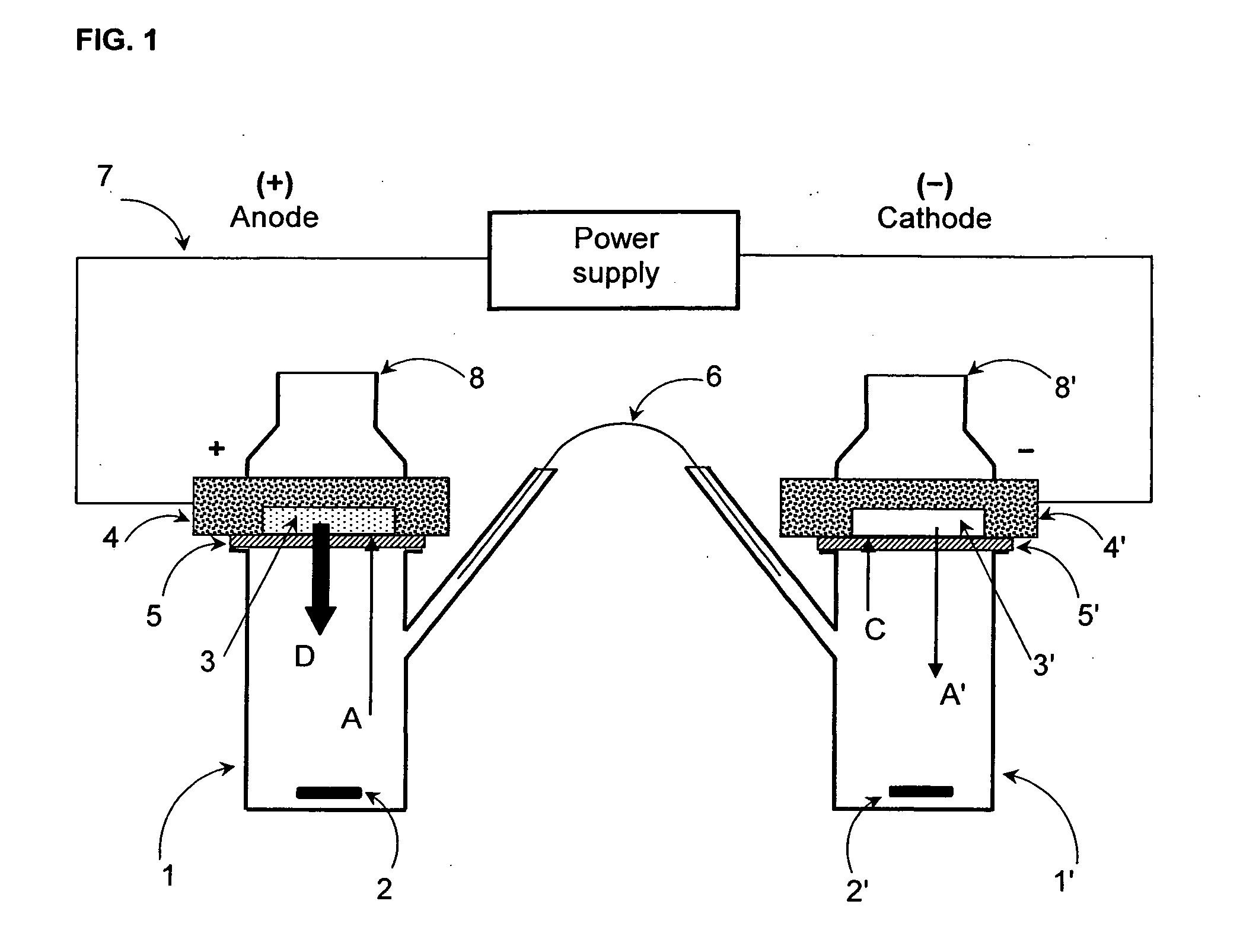Composition for transdermal delivery of cationic active agents
a technology of cationic active agents and cationic active agents, which is applied in the direction of peptide/protein ingredients, depsipeptides, and powder delivery, etc., can solve the problems of impaired iontophoretic delivery of pharmaceutical actives, inability to passively penetrate through the skin at therapeutically effective rates, and inefficient transdermal drug delivery of certain types of drug substances, etc., to achieve efficient, rapid-onset and safe transdermal iontophoreti
- Summary
- Abstract
- Description
- Claims
- Application Information
AI Technical Summary
Benefits of technology
Problems solved by technology
Method used
Image
Examples
example
[0137]In the following, the invention and its effectiveness are illustrated by means of examples, together with the attached drawing.
[0138]FIG. 1 shows a schematic representation of an experimental iontophoretic setup for determining in vitro skin permeation obtainable with a cationic active substance-containing composition in accordance with the present invention.
[0139]The experimental setup shown in FIG. 1 includes an iontophoretic 2-chamber cell which comprises a first chamber (1) and a second chamber (1′). Both chambers are modified FRANZ diffusion cells which are conventionally used for determining in vitro permeation rates of transdermal therapeutic systems (TTS). As shown in FIG. 2, the FRANZ cells were modified and arranged so as to be suitable for determining the skin permeation profiles of a composition intended for use in an iontophoretic device, in accordance with the present invention.
[0140]The chambers (1,1′) are immersed in a thermostatically controlled water bath (no...
PUM
| Property | Measurement | Unit |
|---|---|---|
| time | aaaaa | aaaaa |
| resistance | aaaaa | aaaaa |
| pH | aaaaa | aaaaa |
Abstract
Description
Claims
Application Information
 Login to View More
Login to View More - R&D
- Intellectual Property
- Life Sciences
- Materials
- Tech Scout
- Unparalleled Data Quality
- Higher Quality Content
- 60% Fewer Hallucinations
Browse by: Latest US Patents, China's latest patents, Technical Efficacy Thesaurus, Application Domain, Technology Topic, Popular Technical Reports.
© 2025 PatSnap. All rights reserved.Legal|Privacy policy|Modern Slavery Act Transparency Statement|Sitemap|About US| Contact US: help@patsnap.com


